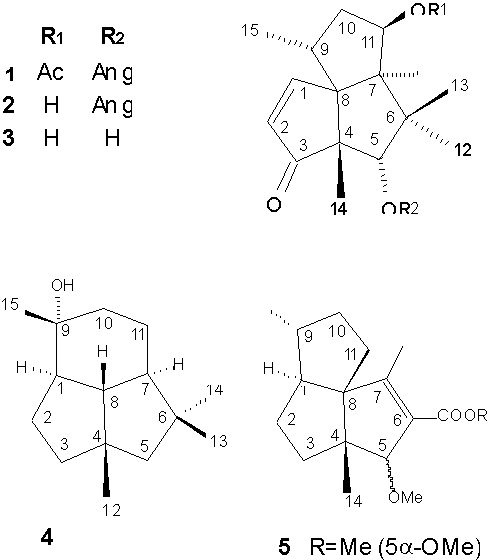
1Centro de Ciencias Medioambientales, CSIC, Serrano 115-dpdo., 28006 Madrid, Spain.
2Universidad de Valencia, Dpto. de Química Orgánica, Dr. Moliner 50, 46100 Burjassot, Valencia, Spain.
3Instituto de Productos Naturales y Agrobiología, CSIC, Avda. Astrofísico F. Sánchez, 3, 38206 La Laguna, Tenerife, Spain
Silphinene 1, isolated from Senecio palmensis Chr. Sm and its structural derivatives 2 and 3, generated by means of chemical hydrolysis, are strong antifeedants against two Chrysomelids, the Colorado potato beetle, CPB (Leptinotarsa decemlineata Say) and the western corn rootworm (Diabrotica virgifera virgifera LeConte). Here, we have further tested the antifeedant effects of 1, 2 and 3, along with silphinenes 4 and 5 isolated from Artemisia chamaemelifoliaVill against CPB and five aphid species, and their antifeedant effects have been compared with these of picrotoxin, a well established GABA antagonist. All the test compounds were strong antifeedants to L. decemlineata. Among the aphid species tested, Myzus persicae was repelled by compound 3 , Sitobion avenae by 1 and 3 and Diuraphis noxia, the most sensitive aphid, by 1, 2 and 4. We have also tested the toxic effects of these compounds against adult CPB, S. littoralis larvae and the silphinene-sensitive aphid species. The toxicity of these compounds did not correlate with their antifeedant action. These results support the hypothesis of a shared molecular mechanism for for antifeedant taste chemorreception in divergent insect species.
